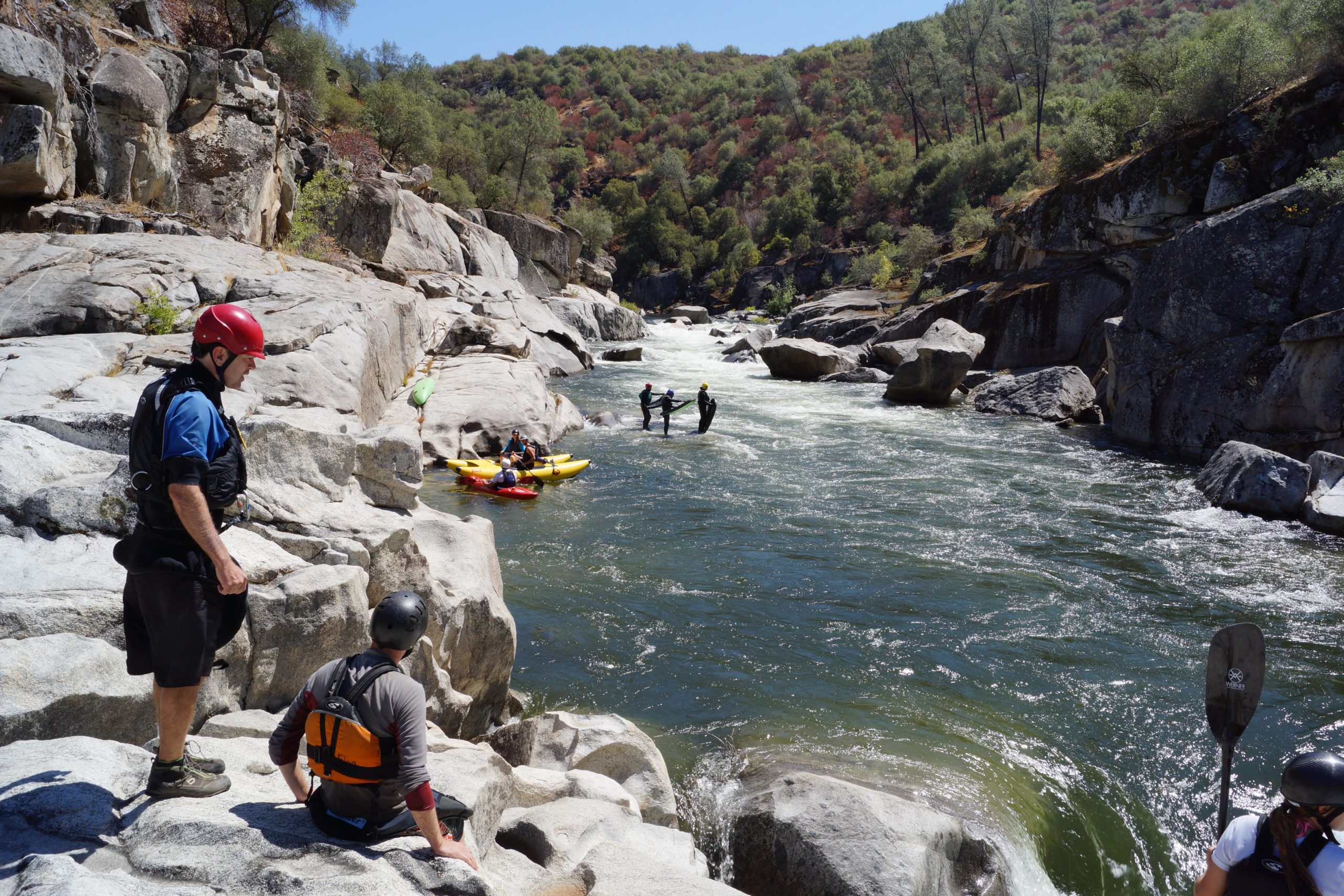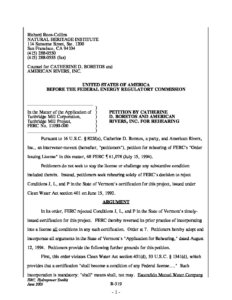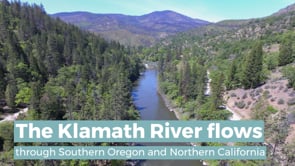Annual Rec Flows Start this Spring Horseshoe Bend San Joaquin River (CA)

By: Theresa Lorejo-Simsiman
Paddlers get your boating gear together for annual recreational flow releases on the Horseshoe Bend reach of the San Joaquin River. After nearly two decades of direct advocacy and engagement, American Whitewater is pleased to announce the fruits of our labor. In March 2021 Southern California Edison (SCE) announced they finally secured approval of Long Term Operating Rules for operation of the Big Creek 4 Hydroelectric Project on the San Joaquin River. These rules outline long awaited flow improvements that will begin this Spring. In a win for American Whitewater, managing agencies, and the North Fork Mono Tribe, SCE will now provide flow releases that restore more natural flow patterns that are both optimal for recreational paddling and protective of native aquatic species.
American Whitewater Plays the Long Game
It was not by accident that optimal recreational opportunities and flows protective of native aquatic species converged in this matter. The new license order for SCE’s Big Creek 4 Hydroelectric Project required development of an Adaptive Management Plan for River Flows. The plan would establish Long Term Operating Rules for providing flows for whitewater recreation, while protecting native fish, reptiles, and the aquatic community. This whole process began in 2003 with the formation of a technical review group which included American Whitewater California Stewardship Director, Dave Steindorf, and long-time Regional Coordinator, Paul Martzen. This review group would analyze baseline data and compare it to data gathered before, during and after test recreational flow releases that were outlined in the new license to occur in August and September. They would measure impact to aquatic resources and formulate how recreational flows could be provided for the remainder of the license.
The studies, however, proved slow going since mother nature needed to cooperate to facilitate analysis during the “out of season” period between August and September. The study required providing opportunities for optimal boating flow releases in both a wet “spill” year over the dam and a dry “non-spill” year. Unfortunately, in this era of climate change getting water conditions just right for an “out of season” recreational flow release was a rare occurrence on the San Joaquin River. Over the course of nine-years of post-license study, collected data did not indicate that recreational releases had the potential to negatively impact native aquatic species. However, the data was not conclusive and further study was required by the managing agencies. Nearing a decade into the new license order there was still no solution for recreational flows on Horseshoe Bend.
Change of Course
Recognizing the futility of waiting for more opportunities to study impacts to native aquatic species during “out of season” flow releases, American Whitewater made a command decision to request that the review group change course. Understanding that what is good for biota is good for boaters, it was time to drop the concept of “out of season” flows and study the validity of providing recreational releases through working with natural spills. This would imbed flows in a gradual ramp down of snowmelt runoff during wet spill years. In dryer years without spill, American Whitewater suggested shaping a boating release that would mimic a natural Spring runoff. Both ideas would be protective of native aquatic species and give us long-awaited annual whitewater boating releases. Upon consensus from the review group the new course took shape.
Long Road, Great Outcome
In March of 2019, California Stewardship Director, Theresa Lorejo-Simsiman signed off on Long Term Operating Rules for American Whitewater with Paul Martzen still at the table. Slogging through the 2020 COVID pandemic and unprecedented wildfire, the Sierra National Forest Supervisor provided approval to make the rules a reality for Spring 2021. The rules ultimately outline prescriptions for recreational releases in four scenarios. The first three are based on natural spill and the water year schedules from the Mammoth Pool Operating Agreement. In spill years during the months of May through August, SCE will slowly down ramp the declining limb of spill once the average daily flow reaches a specified threshold. The down ramp mimics the natural hydrograph to enhance the aquatic community. But it also results in 3-8 days of recreational flows in the range of 3500 cfs down to 1600 cfs depending on the water year schedule. The last scenario in non-spill years simply shapes one weekend of boating flow and down ramps off that flow preventing fish stranding. This results in one day in the range of 2500 down to 2000 cfs and another day in the range of 2000 down to 1600 cfs.
American Whitewater is happy to turn the page on protective recreational flows, but we know the work is not done. Including annoucing the dates for the Horseshoe Bend releases!
From the Desk of Southern California Edison
Water Year Forecast
This was an extremely dry year and is tracking to be one of the driest on record. The overall runoff forecast for the San Joaquin River Basin into Millerton Lake is only 34% of normal. For the purposes of the LTOR, it is going to be a Non-Spill Year which means SCE will have a scheduled Boater Release weekend to provide supplemental flows for whitewater boating opportunities.
Non-Spill Year – Scheduled Boater Release Weekend (June 5th)
In accordance with the LTORs (Section 2.4, p. 10), SCE will be providing flow releases and down ramp of the boating flows beginning Saturday, June 5th. Flow releases will support white water boating opportunities on June 5th and 6th with flows ranging between 2,500 cfs and 1,600 cfs. Beginning Monday, June 7th flows will decrease per the schedule – reaching MIF requirements by the morning of Tuesday, June 8th.
Mark your calendars and enjoy!


